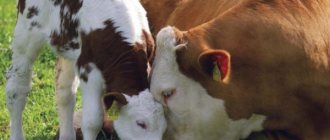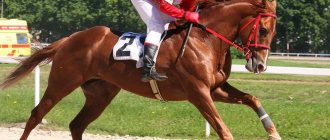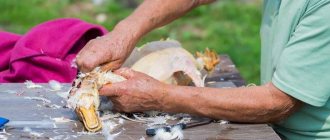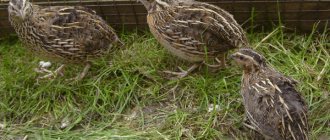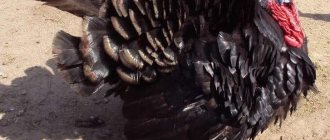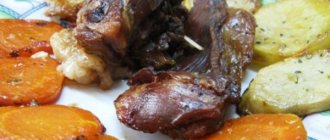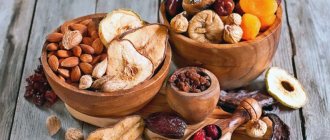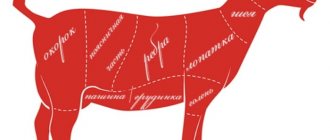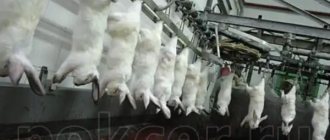Raising calves at home is painstaking work that requires a lot of effort, but it is at calf age that the foundation for the future productivity of the animal is laid. Therefore, it is extremely important for the owner of cattle to know the developmental features of young animals at all stages of their life and provide them with care and feeding appropriate to the chosen type of housing.
Raising calves at home
Growing stages
To understand how to raise a calf, you need to familiarize yourself with the breeding features of the selected breed.
The main thing here is to choose the right living conditions and fully care for the animals.
There are several ways to raise young animals. However, regardless of the chosen method, the entire growing period can be divided into four main stages. Let's look at them in more detail.
Milk stage
The newborn calf lives through this stage from birth until the age of four months. It is considered the most important period, especially for nursing cows. During this time, the newborn individual feeds on milk. That's why this period is called milk period.
A newborn baby should be close to his mother during the first two weeks. When feeding animals for meat, this stage lasts up to 8 months. During this time the cow should not be milked.
Suction stage
The suckling period is the time of raising young animals. During this time, the animals are given milk along with feed. Typically, the suckling method of raising calves lasts 3 months. At the end of this period, the young animals are transferred to rougher feed. In this case, the babies are separated from the nursing cow. This method of cultivation is considered the most rational.
Time of intense growth
Raising calves at home necessarily goes through a stage of intensive animal growth. At this time, cows and bulls gain the bulk of their weight. Therefore, at this stage the farmer must provide the animals with complete and proper nutrition. If the diet was formed correctly, then calves can gain 1 kg in weight every day.
Fattening
After a period of intense weight gain, it is time to fatten. This stage lasts about 1.5 years. The key point here is also the adequate nutrition of the young animals. The quality of meat products directly depends on the quality of feed given to animals. Depending on the breed, a specific fattening technology is selected.
Weight norm
The weight of a newborn calf depends on what breed it is, and the weight of a grown bull will depend on how it was fed and kept. The approximate weight norm is provided in the table:
| Age in months | Weight in kilograms |
| Newborn | 20-30 |
| 1 | 50-60 |
| 2 | 70-80 |
| 3 | 90-100 |
| 4 | 100-120 |
| 5 | 120-130 |
| 6 | 130-170 |
| 10 | 200-240 |
| 12 | 250-400 |
The weight of a bull directly depends on the quality and quantity of feeding, walking method and maintenance. Also, the weight depends on the breed of the bull; some species are not famous for their heavy weight, while others, on the contrary, delight with their weight gain.
Growing methods
In order for livestock to be highly productive, it must be kept in certain conditions. Depending on them, methods of raising calves are selected. Today, there are several ways to raise young cows. Let's look at each method in more detail.
Cold
Considered the most effective. The cold method of raising calves is used for both beef and dairy breeds. Keeping a calf using this method must be carried out in a special house, which is located in an open area. The room is not heated. The only convenience is the bedding. In such conditions, young animals must be kept from the first days of life.
The advantages of this method include:
- activation of the hidden reserves of the animal’s body, which leads to significant weight gain;
- getting vitamin D naturally;
- increasing resistance to colds and infectious diseases;
- improving metabolism by stimulating the thyroid gland.
However, the cold growing method is very expensive.
Traditional
Involves keeping young animals together with cows. Calves begin to be kept separately when they reach a certain age. The advantages of this method include:
- young animals do not require special attention;
- costs are minimal.
Among the significant disadvantages, the risk of digestive problems in animals should be noted. Due to weakened immunity, calves can become infected with infectious diseases. Without proper care, the disease can affect most animals.
Group
The group breeding method involves keeping older calves in small groups. The main condition for rearing is groups of 10–20 animals. In such conditions, animals develop quite quickly. But if infection occurs, the risk of losing most of the livestock remains high. But maintenance costs will be minimal.
Tethered
This breeding method is relevant for young animals under 3 months of age. At this time, animals are most vulnerable to various diseases. In essence, the tethered method resembles the cold method. The calf is kept separate from the rest (separated by a net) and tied to the feeder. The disadvantage of this method is the restriction of the animal's movement. But the risk of infection in young animals is noticeably reduced.
Each method of breeding young animals has its own characteristics, as well as pros and cons. This must be taken into account when choosing a method. However, experienced livestock breeders are advised to obtain a preliminary recommendation from a veterinarian who examines the calves and treats them. Only a professional, based on the characteristics of the breed, as well as the well-being of an individual individual, will be able to assess the risks of keeping it in certain conditions.
Flaws
This method does not protect against mass destruction of animals by any disease, since, as is known, the disease develops faster indoors.
- If calves are kept indoors, they do not receive enough ultraviolet radiation, and as a result - a lack of vitamin D, weakened immunity, rickets, and frequent illnesses.
- Calves that are raised in a traditional way most often have problems with the digestive organs.
- Raising calves in the traditional way, as in the video, is fraught with problems with the growth or development of young animals, and there is a possibility of staleness.
What methods and techniques to use for breeding and maintaining your livestock is an individual matter for the farmer himself, but it is worth consulting with a veterinarian. Raising calves at home is a profitable business , and is therefore widely used by beginning and experienced farmers.
So, consideration of the basics of raising calves on a farm makes it possible to conclude that this process is labor-intensive and has high initial costs. However, the use of the above methods will reduce possible risks and ensure optimal livestock performance.
Disease Prevention
Keeping calves on a farm involves not only proper nutrition and care, but also preventive procedures against diseases. Young animals on the farm should be periodically vaccinated against the most common diseases. It is also necessary to add vitamins and mineral complexes to the feed.
The most important disease prevention is keeping animals clean and in optimal conditions for them.
In the premises where animals are bred, it is necessary to periodically clean and replace bedding. Also, food in feeders and water in drinkers must be fresh and clean. Otherwise, there is a risk of infectious diseases.
As you can see, keeping calves on a home farm has certain subtleties, knowledge of which will allow you to raise healthy animals with high productivity.
Use of medications
In order to accelerate the growth of muscle mass, farmers use various medications:
- antibiotics – Tetracycline, Penicillin, Streptomycin;
- Nucleopeptide;
- Eleovit.
Antibiotics act differently on adults and calves. Up to 6 months calves experience accelerated weight gain. The increase when taking antibacterial drugs in calves is 14% greater. From 6 months growth stops. While taking antibiotics, the following is noted:
- stabilization of the leukocyte formula;
- increasing the digestibility of mineral components and protein;
- increased weight of the heart muscle, liver, and all parts of the gastrointestinal tract.
Injections have a greater effect than adding them to food.
After slaughter, the content of antibiotics in meat will be within normal limits if the use was stopped 1–2 months before. Otherwise, meat products are discarded. In addition, regular use of antibacterial drugs reduces immunity to many diseases. Antibacterial drugs are given to cattle as prescribed by a veterinarian, according to age and health status. Antibiotics are sometimes replaced with Biovit-40. The drug is intended for calves with growth retardation. But, after taking it, the cost of meat is significantly reduced.
Important! In parallel with antibiotics after weaning, probiotics are given. This is a group of drugs consisting of bacteria that improve intestinal function. Without them, the effect of antibiotics is detrimental to the internal organs of the animal.
Nucleopeptide is a product for increasing productivity. Promotes accelerated production of interferon in the body, which stimulates the immune system and improves the condition of the coat.
Eleovit prevents the leaching of calcium from the blood during the period of active development. It is a complex of vitamins and minerals. There are no restrictions on the sale of products.
Prohibited drugs include anabolic steroids containing androgen. This hormone is produced in the body of animals when they reach puberty. Its artificial introduction causes gigantism. After slaughter, meat retains an elevated level of the hormone, which negatively affects human health.
Features of raising calves
Compliance with basic rules for maintenance and care will help produce healthy livestock from young animals. Let's consider general recommendations for the care and maintenance of young animals.
The entire growing period can be divided into four stages.
Milk period
The duration of this stage is about four months from the moment of calving. This is the most important period in the life of future nursing cows . The main component of the calf's diet is milk, to which other feed is gradually added.
During the first two weeks, it is not recommended to separate the calf from its mother. Housing together is beneficial for both the calf and the cow. During the first days, the cub feeds exclusively on mother's milk.
Around the fifth day, the young animals begin to be accustomed to water. After the second week of life, hay begins to be included in the diet and only then concentrated feed is added.
Sucking period
It is during this stage that the purpose of raising young animals is determined. For example, if a heifer is raised for meat at home, then the milking period for it lasts about eight months. Moreover, the cow is not milked during this period.
On large farms, several calves can be allowed to share one cow.
For about three months, young animals receive whole milk along with other feeds. After this period, the calves completely switch to rougher food, and the next batch of young animals is allowed in to the freed cow.
This approach is considered the most rational.
Period of intense growth
It is at this time that the young animals gain the bulk. The farmer’s task is to provide the calves with adequate nutrition. With the right approach, a heifer can gain up to one kilogram of weight every day!
Fattening period
A key stage in raising beef calves. It can last about a year and a half. All this time, the calf must receive adequate nutrition. Otherwise, there is a risk of weight loss, which may affect the quality of the meat.
Important! These are just general recommendations! For proper cultivation, it is recommended to consult a livestock specialist! This specialist will help you choose a balanced diet and provide proper care for the young animals, depending on the breed and climatic conditions.
In the boxes
Cows are kept in special box sections. The animals are constantly in the box, and only sometimes move to the opposite side to feed.
Thanks to the equipment of cows in boxes, they can be milked, cared for and given rest. In one section there are approximately 40 heads, which are distributed by age. Such maintenance saves space and facilitates the entire process of caring for the animal, because everything happens at a mechanized level. This has a positive effect on milk production.
Recommendations for raising calves for meat at home
When raising young animals for meat at home, there are a lot of tricks. Taking into account all these nuances, you can not only make the growing process easier, but also get high-quality meat.
It is recommended to predict the calving of the cow at the end of winter or beginning of spring. This is the least busy time in the household. In addition, it has been noticed that calves born at this time of year are less susceptible to various diseases . At three months of age, young animals can eat on pasture, which allows them to save on feed.
You should take into account the fact that bulls gain weight faster and their meat is less fatty.
If a calf is being raised for fatty beef, it makes sense to castrate it. This is usually done before the age of three months. In this case, muscle mass stops developing and obesity occurs.
Heifers need increased nutritional composition and standards. This helps to slow down their puberty and, as a result, gain weight.
If you feed calves intensively until they are one year old, you can get “marbled meat.” This is a tender juicy and tasty product. If you save on food during this period, the beef turns out tough and stringy.
Young animals for slaughter are raised at home, as a rule, until they are one and a half years old. Thus, you can get about 450 kilograms of live weight.
It is recommended to fatten the young animals two or three months before slaughter. This is done through increased feeding with concentrated feed or grazing on pasture.
Important! When fattening, animals must graze at least 16 hours a day! In addition, it is beneficial to add table salt to their diet. Following these simple rules will not only allow you to get nutritious and easily digestible meat, but also get an increase in live weight of about 60%.
Organization of bull care
To achieve the most profitable results when fattening an animal, you need to organize high-quality care for it. That is, to provide the most comfortable living conditions. And this means:
- have a spacious enclosure so that it is not crowded, otherwise he will be irritated and excitable;
- in summer, graze in the meadow;
- carry out daily cleaning and regularly change the litter, ensuring that it is always dry;
- eliminate drafts and high humidity, which can cause fatal diseases;
- when fattening a winter calf, heating must be provided, especially at night;
- the floor where the bull will be located must be made sloping and with a gutter for sewage drainage.
By organizing proper care for bulls, you can avoid diseases and gain rapid weight gain. Because with dirty barns, no feeding technology will work.
Having ensured decent maintenance, you need to take care of the right diet.
Calf management methods
When raising young animals, housing conditions play an important role. This allows you to get healthy and productive animals.
There are two main maintenance technologies: cold and traditional. Each method has its own characteristics, advantages and disadvantages. Let's consider both methods.
Cold method
It is considered the most effective and is suitable for young dairy and beef breeds. Its essence is as follows. Calves are kept separately in special houses in open areas. As the name suggests, heating is not provided with this method of maintenance. Of all the amenities, only bedding. Calves begin to be kept using this technology from the first day of life.
- Thanks to the harsh conditions of detention, calves mobilize all internal and hidden reserves. Due to which there is a significant increase in live weight;
- young animals naturally receive vitamin D, necessary for growth and development;
- The risk of infectious and cold diseases is significantly reduced. The body is strengthened and works with maximum efficiency;
- cold method of keeping, stimulates the thyroid gland, which promotes better metabolism.
Cons: significant financial costs. At low ambient temperatures, milk consumption by calves increases. In addition, building houses is also not cheap.
Traditional method
Despite the fact that this method is considered outdated, it remains very relevant. Its essence is the joint keeping of calves and cows. Only after reaching a certain stage in development, the young animals are resettled.
- calves require less attention. In the event of a sudden cold snap, they do not remain defenseless;
- financial benefit. This method is practically cost-free.
- young animals kept using this technology have digestive problems;
- if an infection occurs, the disease spreads very quickly;
- The calf's body does not fully receive ultraviolet rays. Therefore, young animals have weak immunity and rickets.
Group method
The essence of the method is that for six months the young animals are kept in small groups of about 10-20 animals. It has been noticed that under such conditions, calves develop much faster.
This efficiency lies in the competition of young animals among themselves. Of course, there is a risk of losing the entire livestock of young animals if an infection occurs, but maintenance costs are reduced.
Tethered method
This method is especially relevant at the age of three months. It is during this period that calves are most susceptible to various diseases. At its core, this method resembles the “cold” keeping of young animals. The calf is tied to the feeder and is separated from the other animals by a net.
Among the disadvantages of such housing, there is limited mobility in the calf, but the likelihood of catching an infection from a sick animal is reduced.
How to ensure rearing, feeding and what methods to use to rear calves is an individual matter for each farmer. But it is best to take the advice of a veterinarian. After all, the advice that is suitable for some breeds of cattle may not be relevant for others. In addition, it is worth taking into account the climatic features of the region in which the farm is located. Only an experienced specialist can advise on the optimal way to raise young animals, taking into account these features.
How to keep a farm to generate income
Raising cows on farms can be considered a fairly profitable business if you follow basic farming standards. The breeder must understand the following issues:
- types of livestock for producing dairy and meat products, what are their differences and advantages;
- features of raising livestock of the selected breed;
- nuances of content in different seasons and seasons;
- opportunities for marketing and selling dairy and meat products.
The farmer will need to draw up a business plan that will include:
- initial costs, start-up capital;
- fixed and variable costs;
- possible profit from sales.
Based on calculations, it is possible to assess the real possibilities of running a farm.
Important features of starting a business are the need to maintain documentation and compliance with production standards.
Fattening bulls for meat at home (detailed table)
You've probably heard more than once that keeping bulls is not as profitable as keeping heifers. But do not rush to be categorical on this issue, because proper fattening of bulls for meat at home, the feed table that we will provide you, solves many problems, including the rational distribution of feed. If you are determined to start such a business, or simply keep calves for your own needs, you just need to read to the end of the article, in it you will find everything you need to know to be successful.
Diet of fattening bulls:
The main advantage of bulls over cows is that they quickly gain weight, and already 12 months after birth they can weigh about 400 kilograms. The main thing is to build your diet correctly, and then you will be guaranteed tasty meat for sale and for yourself. In addition, they do not pick at their food, but eat everything you offer them. If, when fattening cows, you monitor the diet, taking into account that some feed can affect the smell or taste of the milk, then such problems do not arise with bulls.
Sometimes calves are weaned from their mother early, in which case it is necessary to strengthen the diet with dairy products and its waste. The first month of life affects the formation of the digestive system, so enzymes must be included in the diet. With their help, the calf will be able to digest roughage, which will affect better absorption of food, and accordingly, will have a beneficial effect on the development of the animal. As a result, you save feed, and the bull develops successfully and rapidly.
Often, improper diet of fattening bulls leads to intoxication of the animal’s body. If he eats little food of plant origin, but often, the food is not digested, but remains in the stomach, which leads to problems.
Many farmers have learned the simple truth that the more dairy products you give to an animal in the first six months of life, the better it develops. It is best to include milk, whole or skim, in their diet, and also give them whey in their food. But not in its simple form, it is best to mix it with animal feed or vegetables. To keep the bull's microflora in order, it is better to give him lukewarm whey instead of water.
Probiotics can help replenish dairy if you are low on dairy, but you should consult your veterinarian to do so. They should be used as a dietary supplement. If fattening bulls for meat at home is carried out intensively, then the bull must be fed at least one hundred kilograms of food. What's included:
- Crushed grain, you can use corn, barley, or wheat, such feed is given both dry and diluted with whey;
- There should be plenty of hay; in the summer it is exchanged for lush grass;
- Lots of greenery;
- Don’t forget about vegetables, but they need to be thoroughly washed and cut before feeding.
In order for the animal’s body to better cope with the task of digesting food, it is necessary to organize and adhere to a feeding schedule. It is best to feed the bull three times a day, at the same hours.
Rot and moldy products are contraindicated for animal feed.
Scheme for fattening a bull for meat:
Most often, in any of the large farms, there is a fattening scheme, according to which the animal must gain weight by at least half a kilogram per day. The same schemes can be applied in private farmsteads, this will also be effective and useful. A properly designed scheme will protect the animal from malnutrition or overeating. The basic principles of such fattening are as follows:
- For the first two months of life, the calf needs to be fed only dairy products; at the end of this period, high-quality grain and limp green grass are gradually added to the diet.
- 3-6 months, the animal needs a lot of protein, to fill this need, hay and crushed grain are introduced into the diet, also do not forget about vegetables, they must be given in sufficient quantities.
- 7-9 months, food depends on the time of year, if it is summer, then the animal is fed a large amount of grass, in winter it is replaced with hay, haylage, silage.
- Before slaughter, food is diversified and consumption rates are increased, so the bull gains weight faster.
If you follow this plan, the calf meat will not be fatty, juicy and very tasty, and the weight of the animal will be approximately 350-410 kilograms.
Table for fattening bulls for meat:
Feeding calves from the second week of life
Keeping bulls at home video:
Of course, proper nutrition is not enough to raise a worthy animal, you also need proper care, to achieve this, you should keep the barn perfectly clean and regularly clean out the manure. It is recommended to do this three times a day; if you can’t cope, then once a day, no less! Feed once every 8 hours, and find out the norms for fattening bulls for meat at home from our table, and consult with a veterinarian, because an individual approach is required for each case.
To prevent calves from growing into aggressive bulls, they are often castrated during childhood, which negatively affects muscle gain. Therefore, this procedure is recommended to be carried out in the second year of life, unless, of course, you keep them for breeding. Also, unlike cows, it is better to keep bulls on a leash, or in pens. It is best to let them out for a walk right before eating, so they will absorb it with great appetite.
We invite you to also familiarize yourself with an interesting scheme for raising bulls using hay.
Stall
In this case, there is no walking for animals; they live in stalls. This type of maintenance is used extremely rarely and only if there is no land for pasture.
The cows eat the delivered prepared food directly in the stall, and walk in designated areas for about 3 hours a day.
This method is not suitable for personal farming, since feeding imported food all year round is expensive. This method is used only in the winter season, when pasture walking is impossible.
Features of feeding calves in order to obtain quality meat
Properly organized living conditions and a properly selected diet will make fattening calves for meat an economically profitable enterprise. So that animals can be grazed immediately, young animals are purchased at the end of April. If there is no pasture near the barnyard, they make a special paddock, fencing the adjacent area at the rate of 8 - 12 square meters. m on the head.
Crossbreeding of closely related animals
Crossing animals can be of great importance when the goal is not to obtain breeding or dairy animals, but when the goal is to obtain utility animals. So, for example, to obtain animals suitable for fattening, cross breeding is quite appropriate. Mixed breeds with a successful choice of breeds are distinguished by good growth, weight and early maturity. It has been noticed that crossbreeds of Ukrainian and Simmental cattle are sometimes distinguished by their enormous growth, further outgrowing their parents. The same is noticeable in calves, of which the mixed breeds are often distinguished by their greater weight. If such mestizos are immediately castrated, destined for fattening, then cross breeding should be considered quite appropriate. The same can be said about the production of working oxen, which also turn out to be successful when combining two different but suitable breeds. For example, to obtain working oxen, within the distribution of Great Russian cattle, large cows can be covered with Ukrainian bulls and the bulls can be castrated, destined for work.
Characteristics of the diet of young animals
In winter, the main diet consists of hay, root vegetables, and mixed feed, and in summer, dry grass is replaced with fresh grass. Average daily intake: hay - 3 kg, root vegetables - 2 - 4 kg, concentrates - 1.5 kg per head. By the year, the amount of succulent feed is doubled, and compound feed is reduced to 1 kg. Approximate feeding order:
- Swill from concentrate.
- Juicy feed.
- Grass or hay.
From the age of six months, food waste can be introduced into the diet. The potatoes are pre-boiled and mashed.
They switch to green food at home gradually, since a sudden change in diet will cause upset in the digestive processes and, as a result, low weight gain. First, they feed 10 - 15 kg per head per day, after roughage, within a week the norm is increased to 70 kg, feeding with concentrates twice a day and giving 50 - 100 g of salt.
Animals gain weight especially well on cereals, legumes and asteraceous crops. The most valuable part of plants is the leaves, which contain some fiber and a large amount of essential nutrients and vitamins.
Particular attention is paid to the room in which the bulls are kept - the stall must be dry, which is achieved by daily removal of the contaminated layer, and a complete replacement of the bedding is carried out once a month.
Calving cow.
Pregnancy in a cow lasts 9 months. Particularly important for the development of the fetus is adequate feeding of a pregnant cow in the first and last quarters of pregnancy. In the first quarter of pregnancy, the viability of the calf’s body is formed, and in its last period, the calf’s size and body weight grow especially rapidly—up to 300-400g. Over the last two months of the dry period, the calf's body weight increases by 2/3. 1.5-2 months before calving, the owners of private household plots and peasant farms start the cow for the dry period (dry period). A cow's feeding ration during the dry period should include 6-8 kg of good legume-cereal hay, 15 kg of good-quality silage or 8-10 kg of haylage, 5-10 kg of root vegetables and 2 kg of concentrates. In summer, the basis of the diet is green food. To avoid obesity in dry cows, feeding them should be sufficient, but not excessive. Obesity in cows leads to difficult labor and weak calves.
Calving and calf reception. Owners of private farms and peasant farms judge the approach of calving by the following signs: relaxation of the ligaments in the pelvis and root of the tail, swelling of the external genitalia, the genital slit increases in size, the cow lies most of the time, shows anxiety, and often looks at her stomach. When calving begins, the cow begins to periodically strain. Having discovered these signs, cow owners need to prepare for receiving a calf. Contaminated litter is replaced.
A newborn calf is received on a clean burlap sack. Immediately after the calf is born, use a clean towel or gauze to remove mucus from its nostrils, mouth and ears, and wipe its lips and nasal tract. The umbilical cord that did not break at calving is cut off with scissors at a distance of 10-15 cm from the calf’s abdomen and treated with iodine tincture or a solution of potassium permanganate. After which we place the calf on the bedding closer to the cow’s head so that she can lick it. When licking a calf, a cow cleanses its body well of mucus and massages it, which has a positive effect on blood circulation and breathing. Additional information can be obtained in our article - “Caring for a cow after calving”, “Obstetric care during normal childbirth in animals”.
Usually after birth, calves begin to suckle their mother within 2.5-3 hours.
Where to start growing
For residents of rural areas, raising animals at home will not be particularly difficult, because this business can be done for a short period, for example, in the summer, and in the fall you can sell the bull for meat, not bad, and at the same time make money.
It is most profitable to purchase young stock from dairy farms - there will always be the required number of animals, and the breed will correspond to the declared one. When choosing a species, preference should be given to the one that is most common in the region, which will avoid problems with acclimatization.
The optimal age for purchase is 3–4 months, weight is about 100 kg.
Young cattle are not picky about living conditions, and there are no problems with feed either. If you raise only a few bulls - for yourself and for sale, the enterprise does not need to be registered; if the number of livestock increases, paperwork for a private entrepreneur is required.
For a herd of 10 or more heads, service personnel are needed - a shepherd and cattlemen who will be involved in feeding and cleaning the premises.
A very important role is assigned to the veterinarian - he will provide all necessary vaccinations in a timely manner and provide qualified assistance in case of diseases.
Problems that may stand in the way of a farmer
Farming is only at first glance an easy matter, in fact it is hard work and a significant investment of money. In addition to the positive aspects, some problems may arise:
- You can purchase an underdeveloped or sick calf due to inexperience.
- When selling veal, competition may arise, and then you will have to look for another place of sale.
- Particular attention is paid to the sanitary maintenance of bulls and veterinary control.
- The seller (livestock owner) must be registered as an individual entrepreneur (individual entrepreneur), otherwise the sale of meat will be illegal.
Features of fattening a heifer for meat
Breeding animals at home requires certain knowledge about feed, optimal housing conditions and treatment. Fattening for meat can be divided into three periods:
- Preparatory. This stage is based on force-feeding large volumes of food (exceeding the physiological need). Young animals are less picky about feed - they are fed a lot of silage, hay, and straw.
- The main period is similar to the first.
- At the final stage, the calves' appetite decreases, which requires the introduction of a sufficient amount of concentrates and succulent feed into the diet.
One of the main conditions for good weight gain is a properly organized diet: three times a day at regular intervals. Grain crops must be crushed or steamed, potatoes are boiled and mashed, root vegetables are thoroughly cleaned and washed. Young grass is dried before feeding, given in small portions, gradually increasing the volume.
Abundant feeding promotes muscle development, rapid weight gain, and improves the quality of meat.
If the animal’s diet was poor for a short period of time, then after its restoration, the young animals begin to grow rapidly, and prolonged restriction in food will lead to developmental delays.
If there are processing plants nearby - a sugar factory, a brewery or a distillery, starting from the age of six months, the bulls are accustomed to food waste from production.
When raising animals at home, it is important to remember that the correct approach to the matter will ensure that by the age of one year an increase in live weight is 7-8 times compared to the indicators at birth, and by 18 months - no less than a tenfold gain.
Breeding
How strong and productive the herd will be in the future depends on compliance with all the above-mentioned points, but the most important of them is the correct breeding of young animals. Also, a special place here is occupied by the competent selection of parents, because only healthy and strong individuals can give the same offspring.
When choosing a cow for breeding work, the following requirements should be met:
- good physical health and absence of disease;
- rapid weight gain, which by 18 months should already be at least 400 kg (for the Holstein breed);
- absence of diseases of the digestive system;
- high annual productivity;
- milk composition with precise fat and protein levels;
- correct udder shape.
It is also important to pay attention to how the animal calves and how the maternal instinct is developed in the heifer.
When choosing a pair for breeding calves, the most successful option would be to mate representatives of the same breed. This approach will make it possible to predict the characteristics of future offspring as accurately as possible.
In the case of interbreeding, the qualities that will be passed on to the young animals are more difficult to determine. But sometimes this method can give more positive results, enhancing the characteristics of the original rocks.
